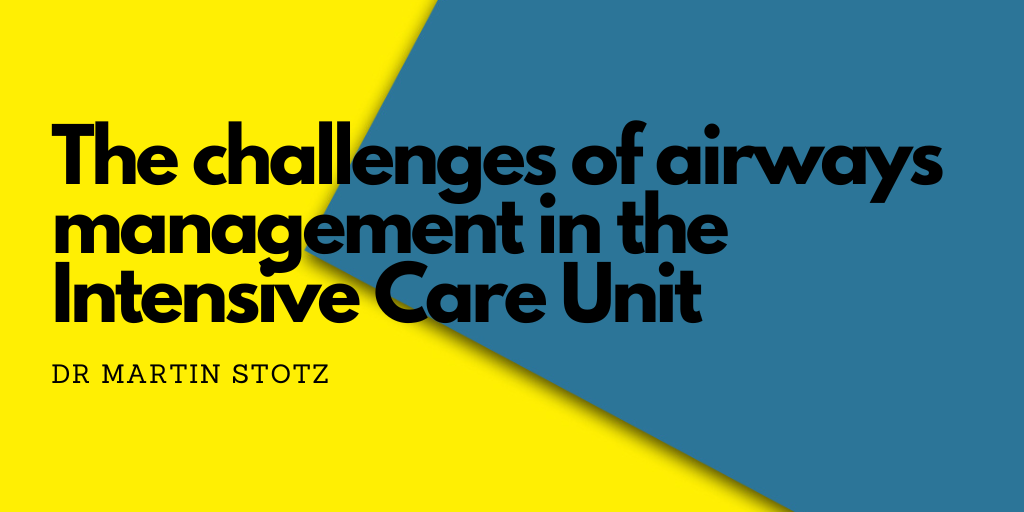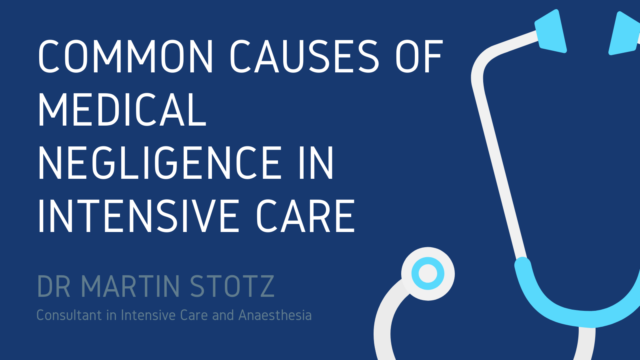The challenges of airways management in the Intensive Care Unit

Airway management techniques were first developed in the field of anaesthesia, and advanced airway management is still an extremely important factor in the care of the critically ill patient. For this reason, intensive care medicine is still closely allied to anaesthesia in many countries. However, the intensive care unit (ICU) environment is not specifically designed with airway management as a priority, and there are other significant differences between the ICU and the operating theatre. Therefore, airway management in the critical care setting presents some unique challenges.
In recent years, many ICUs have moved towards a multidisciplinary approach and not all critical care practitioners are familiar with advanced airway skills. This may be of special importance should an emergency situation arise. Furthermore, human factors, such as team dynamics, will always play a part in the way an emergency situation is managed. In a multidisciplinary team, the interaction between senior and junior colleagues from different specialties has the potential to impact on optimal airway management. Complications often arise following airway management in the ICU, as most incidences of intubation are not pre-planned and frequently involve a rapidly deteriorating patient. However, there may be a lack of adequate specialised equipment available, particularly when a problem occurs and a non-standard protocol is required. Compared to the field of anaesthesia, high-risk patients are less likely to be identified in the ICU setting, and there is a higher rate of events occurring out-of-hours and lower adherence to structured airway management guidelines or plans.
The management of patients in the ICU differs considerably from the operating theatre. It is not unusual for ICU patients to remain intubated for several weeks, which in itself can lead to problems with the airway. It is perhaps not surprising that many airway incidents in ICU take place after the airway has been secured, which is in sharp contrast to anaesthetic practice. Furthermore, ICU patients receiving ventilation require complex care and procedures, including repositioning, which may lead to displacement of the airway device. This is compounded by the fact that the patient will not be constantly overseen by one anaesthetist but managed by a multidisciplinary team. Re-intubation is therefore a constant possibility and one that carries a high risk of complications, including airway obstruction, pneumothorax, and even death.
Difficult or delayed intubation is the leading cause of airway management complications in the ICU. While videolaryngoscopy may improve the view of the larynx, it does not necessarily speed up the process of intubation. A delay of a few seconds may be of little importance during elective surgery but in an already critically ill patient, it may lead to significant hypoxia and a worse outcome for the patient. Anaesthetic guidelines suggest waking a patient if intubation fails, but this may not be an option in the ICU, and a clinician may need to use any means necessary to secure the airway. This could influence the choice of anaesthetic and neuromuscular blocking agents used, as well as the favoured primary and rescue intubation techniques. However, some procedures, such as needle cricothyroidotomy and narrow-bore cannula placement, may not be appropriate in critically ill patients, as their altered physiology may increase their need for high levels of positive end-expiratory pressure, inspired oxygen and inspiratory pressure to ensure that oxygenation levels remain adequate. Thus, where subsequent intubation and ventilation attempts fail, the appropriate course of action may be different than in the anaesthetic setting.
Additionally, patient factors can contribute significantly to the difficulties of airway management in an ICU setting. It is now more common than ever to be faced with an obese patient. This could be a problem, as obesity increases not only the difficulty of intubation but also the risk of complications. Other comorbidities are also common and, due to the nature of their injuries, many patients will have unstable physiology, which increases the risk of a number of conditions developing, including serious hypoxia, hypotension, arrhythmia, cardiac arrest and even death. Furthermore, the initiation of ventilatory techniques may be poorly tolerated and lead to deterioration, either immediate or delayed. The incidence of ‘difficult airway’ is also increased in ICU patients, sometimes as a result of critical care treatment. Fluid resuscitation, capillary leak syndrome, prone ventilation and long periods of intubation can all result in airway oedema and distortion.
There is a large amount of literature concerning airway management in anaesthesia, and it has been recognised for some time that the approach used may depend on the precise circumstances and patient characteristics. Therefore, strategies for several different scenarios, including adults, children, obstetric and pre-hospital populations, have been devised, but these are not necessarily applicable to critically ill patients, and there has been little focus on airway management in the ICU setting. This environment differs from the operating theatre in terms of the case mix, availability of staff with relevant training and experience, availability of specialised equipment, and patient physiology and pathology. However, these differences are not adequately addressed in most published guidelines. As airway management in ICU patients is associated with a much higher rate of complications, it is important that recent guidelines have address these differences in order to improve the safety of airway management in the ICU.
Further reading:
Cook, T. M., Woodall, N., Harper, J., Benger, J., & Fourth National Audit Project (2011). Major complications of airway management in the UK: results of the Fourth National Audit Project of the Royal College of Anaesthetists and the Difficult Airway Society. Part 2: intensive care and emergency departments. British Journal of Anaesthesia, 106(5), 632–642. https://doi.org/10.1093/bja/aer059
Higgs, A., Cook, T. M., & McGrath, B. A. (2016). Airway management in the critically ill: the same, but different. British Journal of Anaesthesia, 117 Suppl 1, i5–i9. https://doi.org/10.1093/bja/aew055
https://www.bjanaesthesia.org/article/S0007-0912(17)54060-X/fulltext




